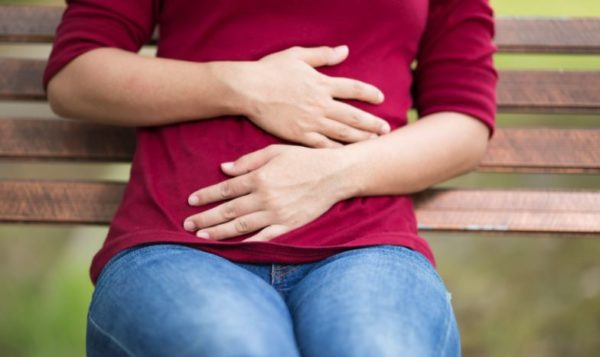Lifestyle
Fibroids: Everything you need to know these non-cancerous tumours

Fibroids are the most frequently seen tumours of the female reproductive system.
More and more women, especially black women are suffering from this problem which causes chronic pain and infertility issues.
Whether you already suffer from fibroids or are at risk from suffering from them, it’s important to know all the facts.
Though they can begin harmlessly enough, fibroids feed off blood and can grow into a larger problem, sometimes ending in fertility problems and even leading to further health problems such as anaemia.
In extreme cases, an otherwise benign tumour can even become cancerous. Here’s everything you need to know about fibroids!
What are fibroids?
Fibroids, also known as uterine myomas, leiomyomas, or fibromas, are firm, compact tumours that are made of smooth muscle cells and fibrous connective tissue that develop in the uterus. It is estimated that between 20 to 50 percent of women of reproductive age have fibroids, although not all are diagnosed. Some estimates state that up to 30 to 77 percent of women will develop fibroids sometime during their childbearing years.
In more than 99 percent of fibroid cases, the tumours are benign (non-cancerous). These tumours are not associated with cancer and do not increase a woman’s risk for uterine cancer. They may range in size, from the size of a pea to the size of a softball or small grapefruit.
What causes fibroid tumours?
While it is not clearly known what causes fibroids, it is believed that each tumour develops from an aberrant muscle cell in the uterus, which multiplies rapidly because of the influence of oestrogen.
Who is at risk for fibroid tumours?
Women who are approaching menopause are at the greatest risk for fibroids because of their long exposure to high levels of estrogen. Women who are obese and of black heritage also seem to be at an increased risk, although the reasons for this are not clearly understood.
Research has also shown that some factors may protect a woman from developing fibroids. Some studies, of small numbers of women, have indicated that women who have had two children have one-half the risk of developing uterine fibroids compared to women who have had no children. Scientists are not sure whether having children actually protected women from fibroids or whether fibroids were a factor in infertility in women who had no children.
There are factors that can increase a woman’s risk of developing fibroids.
- Age.
- Family history.
- Ethnic origin.
- Obesity.
- Eating habits.
Types
Fibroids are non-cancerous tumours that appear in the tissues around the womb.
There are four types of fibroid:
The classification of a fibroid depends on its location in the womb.
Symptoms
Around 1 in 3 with fibroids will experience symptoms.
These may include:
Other possible symptoms include:
If fibroids are large, there may also be weight gain and swelling in the lower abdomen.
Once a fibroid develops, it can continue to grow until menopause. As oestrogen levels fall after menopause, the fibroid will usually shrink.
How are fibroids diagnosed?
Fibroids are most often found during a routine pelvic examination. This, along with an abdominal examination, may indicate a firm, irregular pelvic mass to the physician. In addition to a complete medical history and physical and pelvic and/or abdominal examination, diagnostic procedures for uterine fibroids may include:
- X-ray.
- Transvaginal ultrasound (also called ultrasonography).
- Magnetic resonance imaging (MRI).
- Hysterosalpingography.
- Hysteroscopy.
- Endometrial biopsy.
- Blood test (to check for iron-deficiency anaemia if heavy bleeding is caused by the tumour).
Treatment for fibroids
Since most fibroids stop growing or may even shrink as a woman approaches menopause, the health care provider may simply suggest “watchful waiting.” With this approach, the health care provider monitors the woman’s symptoms carefully to ensure that there are no significant changes or developments and that the fibroids are not growing.
In women whose fibroids are large or are causing significant symptoms, treatment may be necessary. Treatment will be determined by your health care provider based on:
In general, treatment for fibroids may include:
- Hysterectomy.
- Conservative surgical therapy.
- myomectomy
- Gonadotropin-releasing hormone agonists (GnRH agonists).
- Anti-hormonal agents.
- Uterine artery embolization.
- Anti-inflammatory painkillers.
Can fibroids turn into cancer
Fibroids are almost always benign (not cancerous). Rarely (less than one in 1,000) a cancerous fibroid will occur. This is called leiomyosarcoma. Doctors think that these cancers do not arise from an already-existing fibroid. Having fibroids does not increase the risk of developing a cancerous fibroid. Having fibroids also does not increase a woman’s chances of getting other forms of cancer in the uterus.










